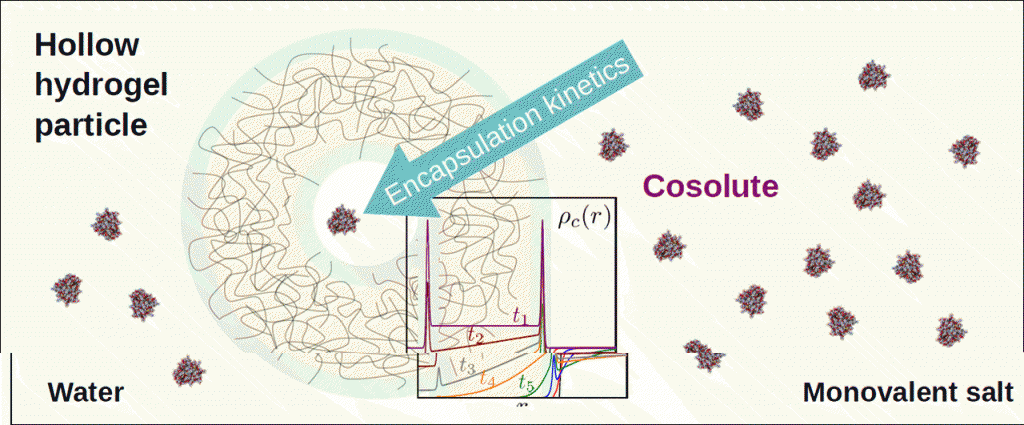A. Moncho-Jordá, A. Germán-Bellod, S. Angioletti-Uberti, I. Adroher-Benítez, and J. Dzubiella
Hollow hydrogels represent excellent nano- and micro-carriers due to their ability to encapsulate and release large amounts of cargo molecules (cosolutes) such as reactants, drugs, and proteins. In this work, we use a combination of a phenomenological effective cosolute-hydrogel interaction potential and Dynamic Density Functional Theory to investigate the full non-equilibrium encapsulation kinetics of charged and dipolar cosolutes by an isolated charged hollow hydrogel immersed in a 1:1 electrolyte aqueous solution. Our analysis covers a broad spectrum of cosolute valences (zc) and electric dipole moments (μc), as well as hydrogel swelling states and hydrogel charge densities. Our calculations show that, close to the collapsed state, the polar cosolutes are predominantly precluded and the encapsulation process is strongly hindered by the excluded-volume interaction exerted by the polymer network. Different equilibrium and kinetic sorption regimes (interface versus interior) are found depending on the value and sign of zc and the value of μc. For cosolutes of the same sign of charge as the gel, the superposition of steric and electrostatic repulsion leads to an “interaction-controlled” encapsulation process, in which the characteristic time to fill the empty core of the hydrogel grows exponentially with zc. On the other hand, for cosolutes oppositely charged to the gel, we find a “diffusion-controlled” kinetic regime, where cosolutes tend to rapidly absorb into the hydrogel membrane and the encapsulation rate only depends on the cosolute diffusion time across the membrane. Finally, we find that increasing μc promotes the appearance of metastable and stable surface adsorption states. For large enough μc, the kinetics enters a “adsorption-hindered diffusion”, where the enhanced surface adsorption imposes a barrier and slows down the uptake. Our study represents the first attempt to systematically describe how the swelling state of the hydrogel and other leading physical interaction parameters determine the encapsulation kinetics and the final equilibrium distribution of polar molecular cargo.

ACS Nano 20 (2019) 1603-1616. DOI:10.1021/acsnano.8b07609 ArXiv

